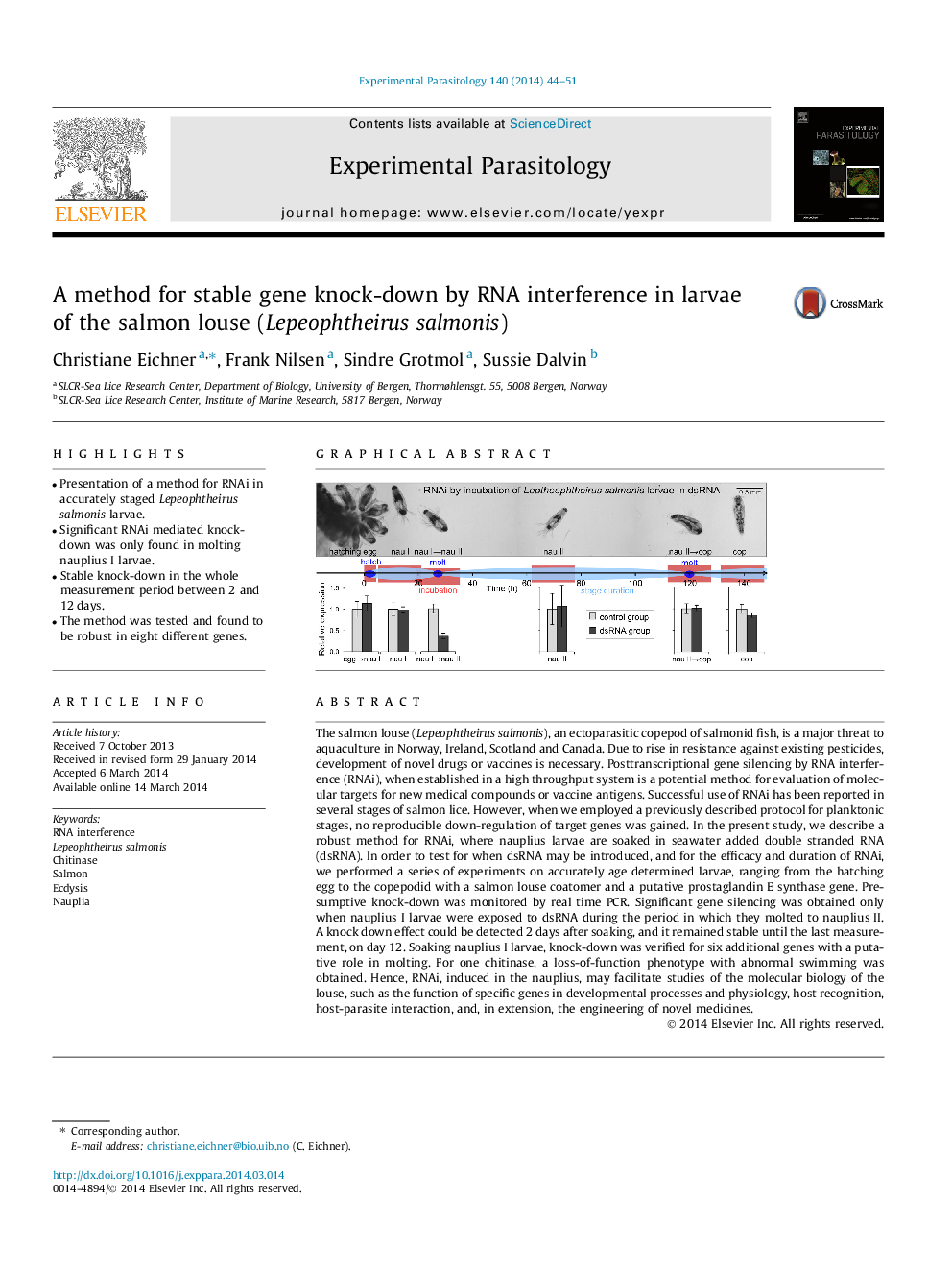| کد مقاله | کد نشریه | سال انتشار | مقاله انگلیسی | نسخه تمام متن |
|---|---|---|---|---|
| 4371120 | 1617024 | 2014 | 8 صفحه PDF | دانلود رایگان |

• Presentation of a method for RNAi in accurately staged Lepeophtheirus salmonis larvae.
• Significant RNAi mediated knock-down was only found in molting nauplius I larvae.
• Stable knock-down in the whole measurement period between 2 and 12 days.
• The method was tested and found to be robust in eight different genes.
The salmon louse (Lepeophtheirus salmonis), an ectoparasitic copepod of salmonid fish, is a major threat to aquaculture in Norway, Ireland, Scotland and Canada. Due to rise in resistance against existing pesticides, development of novel drugs or vaccines is necessary. Posttranscriptional gene silencing by RNA interference (RNAi), when established in a high throughput system is a potential method for evaluation of molecular targets for new medical compounds or vaccine antigens. Successful use of RNAi has been reported in several stages of salmon lice. However, when we employed a previously described protocol for planktonic stages, no reproducible down-regulation of target genes was gained. In the present study, we describe a robust method for RNAi, where nauplius larvae are soaked in seawater added double stranded RNA (dsRNA). In order to test for when dsRNA may be introduced, and for the efficacy and duration of RNAi, we performed a series of experiments on accurately age determined larvae, ranging from the hatching egg to the copepodid with a salmon louse coatomer and a putative prostaglandin E synthase gene. Presumptive knock-down was monitored by real time PCR. Significant gene silencing was obtained only when nauplius I larvae were exposed to dsRNA during the period in which they molted to nauplius II. A knock down effect could be detected 2 days after soaking, and it remained stable until the last measurement, on day 12. Soaking nauplius I larvae, knock-down was verified for six additional genes with a putative role in molting. For one chitinase, a loss-of-function phenotype with abnormal swimming was obtained. Hence, RNAi, induced in the nauplius, may facilitate studies of the molecular biology of the louse, such as the function of specific genes in developmental processes and physiology, host recognition, host-parasite interaction, and, in extension, the engineering of novel medicines.
Figure optionsDownload as PowerPoint slide
Journal: Experimental Parasitology - Volume 140, May 2014, Pages 44–51